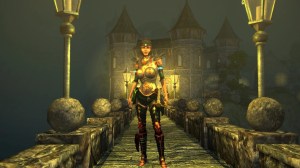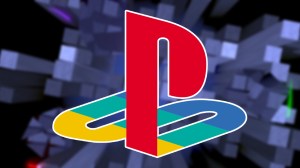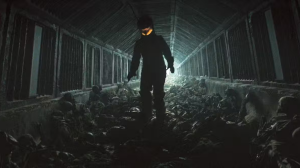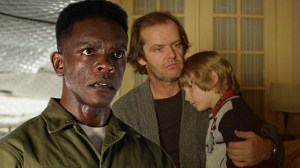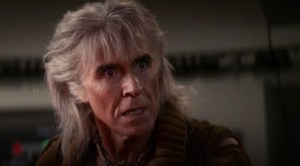Hideo Kojima has celebrated his 62nd birthday this week and with the recent launch of Death Stranding 2, it only feels right to look back at his legendary career. Kojima has been making video games since the 1980s and has developed a reputation as one of the few auteurs in the gaming industry. While it would take some time before Kojima actually became recognized as a singular voice in the industry, his work on the original Metal Gear games helped him learn how to become an efficient and veteran game developer. By the time the industry had evolved to have more depth with its storytelling, Kojima took his skills as a director, but also as a fan of cinematic stories and made games like Metal Gear Solid.
Videos by ComicBook.com
Hideo Kojima was a film fan first and foremost, but saw an opportunity in the games industry. His background and knowledge of film made him an exceptionally unique voice in gaming, paving the way for his works. Although some have joked that it feels like Kojima would be happier making movies than games due to how cutscene-heavy they are and the usage of big-name actors, he has made some incredibly impressive games.
He’s someone who knows how to weave gameplay into the storytelling rather than making them separate entities, but also knows how to layer the gameplay with so much detail. That’s the kind of unique gameplay experience that Kojima creates with his games. With that said, I’ve decided to talk about what I feel are three of Hideo Kojima’s best games (in no particular order) in celebration of his birthday.
Death Stranding 2: On the Beach

Death Stranding 2 is Kojima’s most recent game, but also one of his best. Death Stranding 2 is the first five-out-of-five review I have given since Red Dead Redemption 2 because I was so hypnotized by its serene gameplay, its emotional story, and its captivating world. As is the case with most Kojima games, there’s nothing else like it. While its detractors will diminish it as a “walking simulator”, I would push back on that. Even when you take away the action-packed combat and wide variety of weapons to neutralize someone, there’s a lot of depth to the traversal.
Every journey has to be tediously planned by mapping out your route, accounting for all of the cargo and tools you’ll need to bring with you, but also ensuring you’re not too heavy so you can move quickly and efficiently. However, things rarely go according to plan. Earthquakes, floods, and hostiles can quickly throw a wrench into your plans and lead to brilliant emergent gameplay moments. It’s one of the best games on PS5 and a game that I continue to think about even months after finishing it.
Metal Gear Solid 3: Snake Eater

Hideo Kojima’s birthday ironically falls in the same week as the release of Metal Gear Solid Delta: Snake Eater, a remake of Metal Gear Solid 3. While Kojima is uninvolved in the remake, the original game really went above and beyond what we could expect from a game like this. The Cold War-era story was nuanced and rich, successfully introducing a multitude of incredible new characters that would serve as a partial backbone for the series going forward. It was easily one of the most cinematic games of its time, but it didn’t lack when it came to gameplay.
Metal Gear Solid 3‘s gameplay deepened the stealth mechanics the series is known for by creating a camouflage system that lets you blend in with the jungle around you. Kojima also continued his habit of making extremely meta games by allowing you to manipulate real-time to defeat a boss. You could advance the system clock on the PS2 to kill The End in Metal Gear Solid 3, essentially killing him with old age, which was a remarkably innovative idea. It’s arguably the best Metal Gear Solid game thanks to its story and unique, but engaging gameplay.
P.T.

While not a full game nor even one that you can readily download anymore, P.T. is one of the scariest games of all-time. It’s no secret that Metal Gear Solid is an influential series, but P.T. is as well. This demo for a cancelled Silent Hill game helped shape the direction of future Resident Evil games with the shift to first-person horror and inspired countless indie games to try and make something spooky in an otherwise normal suburban house.
P.T. was so successful because it places you in a life-like recreation of a warm home, but begins to unease you with little details. Heavy rain beats down on the window, a chilling radio broadcast recounts the events of a disturbing murder case, and the inaccessible upper half of the house remains dark… but it feels like something could be lurking around up there, watching you. As you progress, the game becomes increasingly eerie as things become more off-key. You meet a talking fetus in a concrete bathroom that is more harshly designed than the rest of the house, encounter a terrifying ghostly woman named Lisa, and much more.
On top of that, you have no weapons or any way to combat Lisa. While not the first horror game to do this, it created a helpless feeling within players and made for a remarkably tense experience that others have since tried to replicate.
P.T. also made an impression because it was shadow-dropped without any apparent connection to the Silent Hill franchise. It was abstract, lacking any sort of clear objectives or hints. Players had to largely work together with each other online to figure out how to beat it, only to be greeted with a cutscene at the end confirming it was a Hideo Kojima-developed Silent Hill game. Its cancellation is still one of the most heartbreaking what-ifs of the gaming industry.

